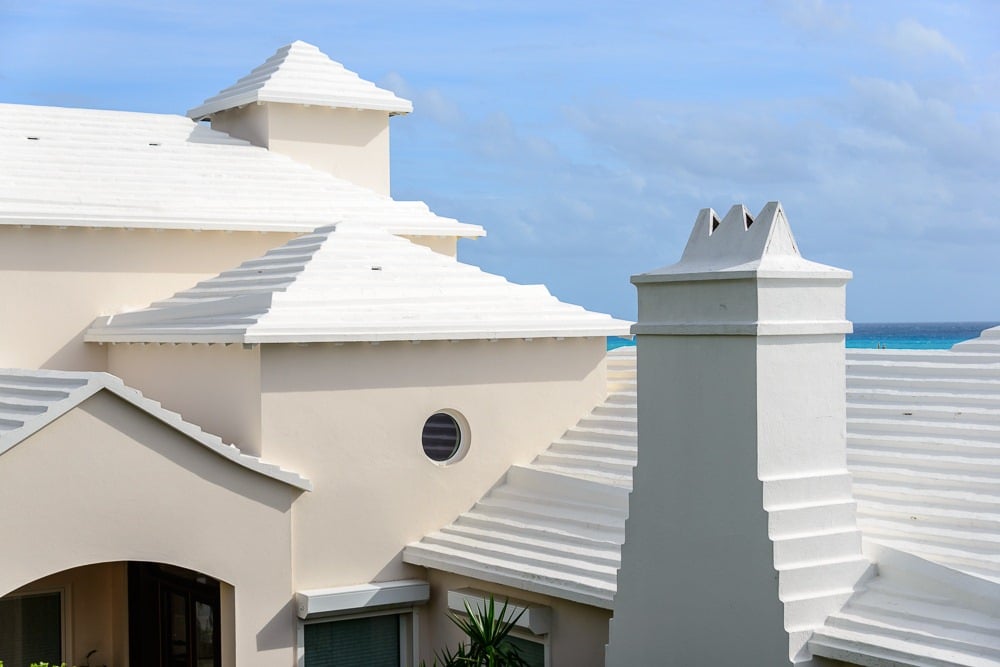A British traveler will feel quite at home in Bermuda, even though the climate there is warmer and brighter than anything possibly experienced in the British Isles. Many of the 60,000 people who live on the island are housed in pastel-colored limestone buildings with architecture reminiscent of British towns and villages. But did you know why houses in Bermuda have white-stepped roofing?
There is no natural water supply in Bermuda. Rainwater is collected by each home’s white, stepped roof.
The White Stepped Roof Technology
The white stepped roofings are designed to harvest water rain, it slows down the heavy rainfall helping, and the gutters will collect the water and store it under the house.
The yearly rainfall is far more than in England and Wales and is distributed uniformly throughout the year, which helps keep the tanks topped off. Each house has everything it needs. There are no water tariffs and no mains water.
The roof’s layout offers several advantages. Because it is made of limestone, it weighs a lot and is resistant to hurricanes. Additionally, it used to be plastered in an anti-bacterial lime mortar. The paint has now taken the place of the mortar. It is still white because this reflects the sun’s ultraviolet rays, which also aids in water purification.
A less obvious advantage of the method is that it encourages water conservation among islanders.
We all grew up managing our own water system in our own home and that drives you to have a sensitivity that you wouldn’t if it simply comes out of a pipe,
Alan Rance, Chief Executive Officer of Bermuda Waterworks
Environmental specialist Stuart Hayward claims that his parents instilled in him that those who don’t preserve water would become thirsty.
You had a cup of water and that’s what you used to brush your teeth. You rationed your cup of water so that with the last bit of it you did your final rinse, You didn’t use a lot of detergents so that by the time you’d finished washing dishes, there wasn’t any foam left over. That water could be used for the garden
Stuart Hayward, Environmental Specialist
There must be a source for this water. Fortunately, Bermuda has had access to meager water supplies from underground lenses for a long time. These layers of fresh groundwater sit on top of heavier saline water.
However, the island is relying more and more on desalination facilities. There are currently six scattered over Bermuda, producing 13,500 cubic meters daily. (Source: Bermudiana)
The Shipwreck Capital of the World
The vast coastline reef of Bermuda and the odd major hurricane are ideal for shipwrecks. Over 300 wrecks from the 1600s have so far been discovered.
The wrecks aren’t in deep water, so snorkelers can see them there. You’ll be able to see the Cristobal Colon, a 499-foot Spanish luxury liner that sank in 1936, as well as other ocean bottom wrecks, including the Constellation, Montana, and many others. (Source: Bermudiana)
Image from AmusingPlanet.com
